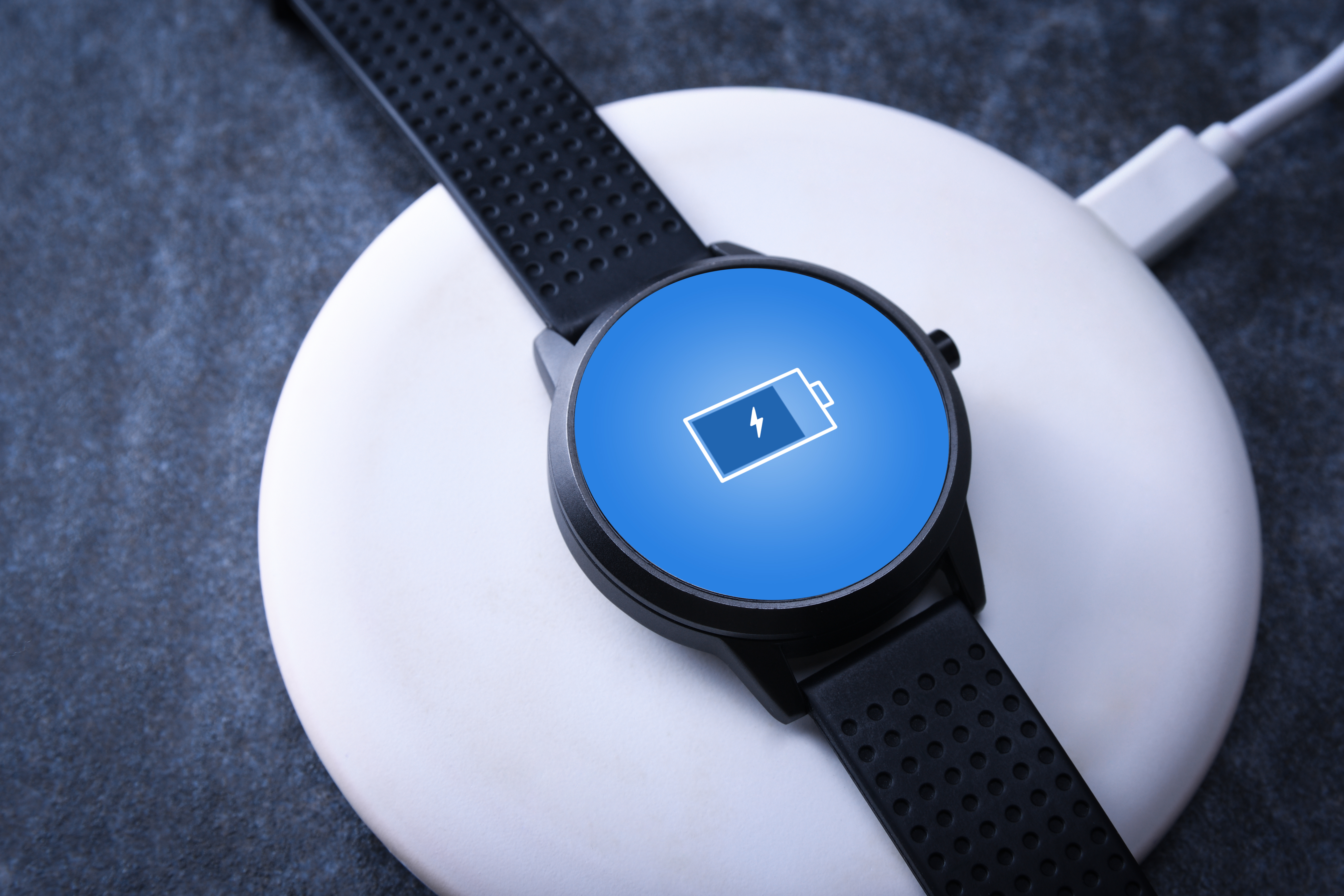Wearable Health Monitoring Devices in Healthcare: Benefits and Drawbacks
In an era where technology intertwines with nearly every facet of our lives, wearable health monitoring devices have emerged as a pivotal force in revolutionizing healthcare. While these devices hold immense promise, they also bring forth a host of challenges and drawbacks that warrant careful consideration
This blog aims to provide a comprehensive exploration of their benefits and drawbacks. Let’s explore it!
I. Overview of Wearable Devices in Healthcare
1. What are wearable health monitoring devices?
Wearable devices in healthcare are tech gadgets, typically strapped to our wrists or integrated into clothing, that use sensors to monitor our health. These sensors collect a wide range of data throughout the day, giving healthcare providers and patients a more comprehensive picture of our well-being. Typical examples of wearable devices include smartwatches, continuous glucose monitors (CGMs),...
2. How It Works
Wearable health devices work by using sensors to gather physiological data, like heart rate, blood oxygen, and movement, directly from the wearer’s body. This information is then wirelessly transmitted to connected devices, such as smartphones or cloud systems, where it can be viewed through dedicated apps. These apps enable users to track health trends, set goals, and even share data with healthcare providers if desired.
To interpret the data, many medical wearables use AI and machine learning, which analyze patterns and provide tailored insights or alerts for potential health issues. By combining sensors, wireless data transfer, and AI, wearables offer real-time, actionable health insights, making them valuable tools for proactive and remote healthcare.
II. Benefits of Wearable Devices in Healthcare
1. Proactive health management
Wearable devices are revolutionizing healthcare by enabling proactive health management. Unlike traditional methods that rely on sporadic check-ups, wearables offer continuous monitoring of vital signs, sleep patterns, and activity levels. This constant stream of data empowers individuals to identify trends and potential health risks early on.
Imagine receiving an alert about an irregular heart rhythm or a notification about consistently poor sleep quality. With this information, you can take preventive measures like consulting a doctor or adjusting your lifestyle, potentially preventing future health complications. By putting health data directly in your hands, wearables empower proactive management and a more informed approach to well-being.
2. Early disease detection and prevention
Wearable devices hold immense potential for early disease detection and prevention. By continuously monitoring key health metrics, these gadgets can pick up subtle changes that might otherwise go unnoticed. A smartwatch detecting a rise in resting heart rate or a fitness tracker showing a decline in sleep quality could be early warning signs of a developing health issue.
Early detection allows for timely intervention, which is crucial for better treatment outcomes and potentially preventing the disease from progressing further. Wearables are essentially like having a vigilant health guardian on your wrist, constantly on the lookout for potential threats to your well-being.
3. Improved chronic disease management
For those battling chronic conditions, wearable devices can be a game-changer in disease management. With the help of wearable devices, diabetics can continuously monitor their blood sugar levels (through a CGM) or a heart patient can track their heart rate variability throughout the day. This real-time data empowers them to make informed decisions about diet, exercise, and medication adjustments.
Wearables can also send medication reminders and provide feedback on treatment effectiveness, allowing for a more personalized and proactive approach to managing chronic illnesses. This not only improves overall health outcomes but also empowers patients to take control of their condition and experience a better quality of life.
4. Personalized medicine
Wearable devices are becoming instrumental in the rise of personalized medicine. The vast amount of data collected by these gadgets, including sleep patterns, activity levels, and physiological parameters, paints a unique picture of an individual's health. By analyzing this data alongside genetic information and medical history, doctors can gain deeper insights into a patient's specific needs.

This personalized approach allows for tailored treatment plans, medication adjustments, and preventative measures that are more likely to be effective for each individual. Your doctor now can create a personalized health strategy based on the data collected by your wearable, leading to more effective treatment and improved health outcomes.
5. Enhanced patient engagement
Wearable devices are fostering a new era of empowered patients through enhanced engagement with their health. By providing real-time data and feedback on activity levels, sleep patterns, and even vital signs, wearables transform individuals from passive recipients of care into active participants. This visual representation of health metrics can be incredibly motivating, allowing patients to see the direct impact of their lifestyle choices.
Additionally, wearables can send medication reminders and offer personalized health insights, fostering a sense of control and ownership over one's well-being. This increased engagement empowers patients to make informed decisions about their health and become active partners in their healthcare journey.
III. Drawbacks of Wearable Devices in Healthcare
1. Data accuracy and reliability
Despite their potential, wearable devices have limitations. A major concern lies in data accuracy and reliability. Factors like improper placement of the device on the body, user error during activity tracking, or limitations of the sensors themselves can lead to inaccurate readings.
This raises concerns about basing medical decisions on potentially faulty data. Further research and development are crucial to ensure the accuracy and reliability of wearable data collection, making them a more dependable tool for both patients and healthcare providers.
2. Security and privacy issues
Security and privacy are major drawbacks associated with wearable devices in healthcare. These devices collect a wealth of sensitive health data, including heart rate, sleep patterns, and activity levels. Data breaches or hacking incidents could expose this information, leading to identity theft or misuse of targeted advertising.
Additionally, concerns exist about how healthcare providers and third-party companies handle this data. Who owns the data? How is it secured? Is it shared with third parties without explicit patient consent? Addressing these security and privacy issues is crucial to ensure patient trust and encourage wider adoption of wearable technology in healthcare.
3. Battery life limitations
While convenient, wearable devices can be hampered by battery life limitations. Some devices require frequent charging, which can disrupt data collection and become an inconvenience. This can be particularly problematic for wearables intended for continuous monitoring of chronic conditions.

Imagine a smartwatch monitoring your heart health needing a recharge every night, potentially missing crucial data during sleep. Manufacturers are constantly working on improving battery technology, but for now, it remains a drawback that needs to be considered when choosing and using wearable health devices.
4. Digital divide and accessibility
The potential of wearable devices in healthcare can be limited by the digital divide. These devices often come with a significant cost, creating a barrier for low-income individuals who may benefit most from proactive health management. This creates a situation where those who need the health insights offered by wearables the most might be unable to access them.
Furthermore, some wearables require a certain level of technical literacy to operate and interpret data. Bridging this digital divide is crucial to ensure equitable access to wearable technology and the potential health benefits it offers for all populations.
5. Over-reliance on technology
Wearable devices, while powerful tools, can lead to an over-reliance on technology for health management. Constant monitoring and data analysis can overshadow the importance of traditional practices like consulting doctors, getting regular check-ups, and maintaining a healthy lifestyle.
This dependence on wearables can create a false sense of security or lead to information overload, causing anxiety or neglecting other aspects of well-being. It's important to remember that wearables are data-driven companions, not replacements for a holistic approach to health that emphasizes both technology and traditional healthcare practices.
IV. Top 10 wearable health devices
1. Apple Watch Series 9
The latest iteration of Apple's flagship smartwatch boasts advanced health features like ECG, blood oxygen monitoring, and fall detection. Its sleek design and seamless integration with the iOS ecosystem make it a popular choice.
2. Fitbit Versa 4
This stylish and affordable smartwatch offers comprehensive health tracking, including heart rate monitoring, sleep tracking, and exercise tracking. It's also water-resistant, making it suitable for swimming.
3. Garmin Venu 2 Plus
Designed for fitness enthusiasts, this GPS smartwatch provides advanced training metrics, stress tracking, and body battery monitoring. Its vibrant display and long battery life make it a reliable companion.
4. Samsung Galaxy Watch 5
This versatile smartwatch combines style and functionality with features like blood pressure monitoring, ECG, and advanced sleep tracking. It's compatible with both Android and iOS devices.
5. Whoop Strap 4.0
This discreet wearable focuses on recovery and strain monitoring, providing insights into your body's readiness to perform. It's ideal for athletes and those who want to optimize their training.
6. Oura Ring
A stylish and comfortable ring that tracks sleep, activity, and heart rate variability. It offers personalized insights to help you improve your overall health and well-being.
7. Withings ScanWatch
This hybrid smartwatch combines traditional aesthetics with advanced health features like ECG, blood oxygen monitoring, and sleep apnea detection.
8. Polar Vantage V2
A robust sports watch designed for serious athletes, this device offers comprehensive training metrics, recovery tracking, and advanced heart rate monitoring.
9. Fitbit Luxe
This sleek and minimalist fitness tracker focuses on stress management, sleep tracking, and activity monitoring. It's perfect for those who prioritize a balanced lifestyle.
10. Xiaomi Mi Band 7
An affordable and feature-packed fitness tracker that offers heart rate monitoring, sleep tracking, blood oxygen monitoring, and more. It's a great option for budget-conscious individuals.
Conclusion
Wearable devices in healthcare paint a picture of a future filled with empowered patients, proactive health management, and personalized medicine. However, responsible development and addressing concerns around data security, accessibility, and over-reliance on technology are crucial. As wearable technology continues to evolve, striking a balance between innovation and responsible use will be key to unlocking its full potential for transforming healthcare for the better.





